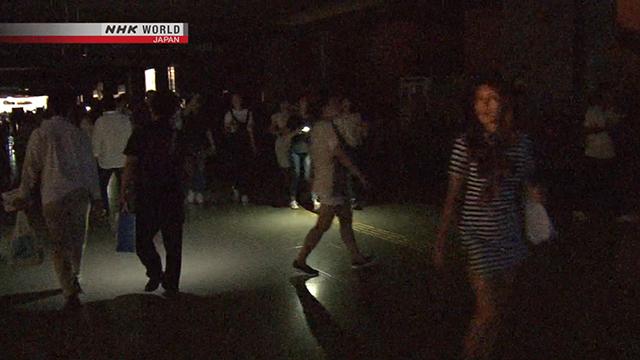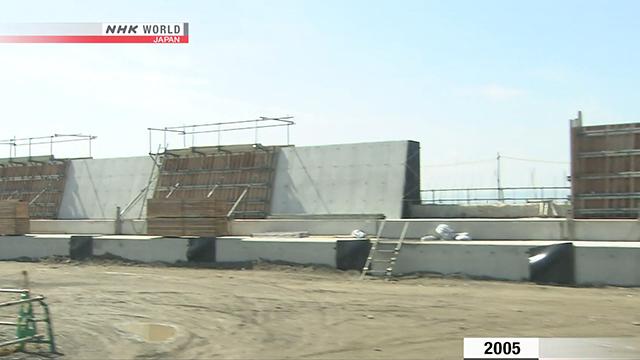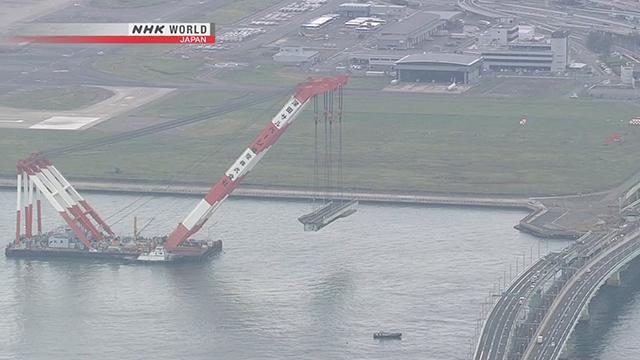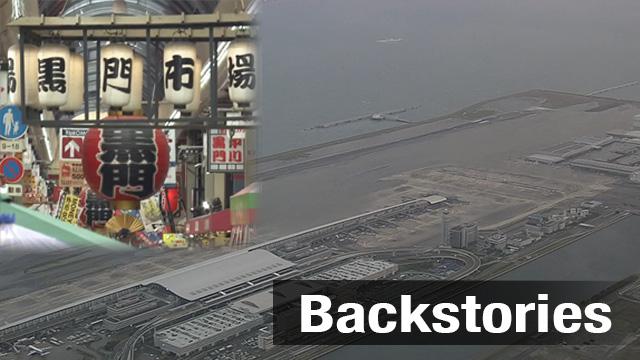Impact of the airport closure

Many international flights in and out of Kansai have been cancelled since the typhoon. Repercussions for the tourism industry have been severe.
Kuromon Ichiba market in the city of Osaka's Minami district has long been a popular destination, but business has turned sluggish.
An employee at a diner in the district says the typhoon is to blame. He says all the stores must be feeling the pinch. He says it's awful, and it all started the day the airport was shut down.

I arrived at Kansai International Airport one day after the strongest typhoon in a quarter century hit the region. The airport had lost power and none of the stores and restaurants was open. I found people outside waiting in long lines for busses to get out. They appeared stressed and exhausted, and thousands were trapped at the scene overnight.
Attilio Pietranera from Italy was one of them. His wife and children had been visiting his wife's family home in Fukuoka-city for summer vacation. He was on his way there to pick them up. When I met Pietranera, he had been waiting for the bus almost 9 hours. "There is no light or electricity, no Internet and no food," he said. "It's quite a challenge."
Fifteen-year-old Kim Hye-won was on a visit from South Korea, and had travelled to Osaka with friends. Trapped at the airport, she worried about her family because she couldn't use her smartphone to contact them.
"I couldn't get any rest at the airport and now have a headache," she said. "I've been waiting for the bus about 9 hours and I'd like to know when I'll be able to leave the airport."
Vulnerable Location
The airport flooding has revealed a major vulnerability. Opened in 1994, Kansai International Airport is built on an artificial island and operates around the clock. This isn't the first time the facility has flooded. In 2004, waves crashed over the seawall, submerging the airport runway. Later renovations were meant to withstand waves to a height of 5 meters above sea level. It was believed this would prevent flooding similar to what occurred when the sea level in Osaka Bay was the highest ever recorded. But the storm surge brought on by Typhoon Jebi exceeded the new height, flooding the airport again.

Airport officials said disasters like this were happening more often than anticipated. Representative Director and CEO of Kansai Airports, Yoshiyuki Yamaya, spoke at a news conference after the storm on September 6th.
"High waves and tsunamis are a big risk for an airport on the sea," he said. "I thought these kinds of disasters would only happen a few times over several decades. It has happened, so we will do our best to manage it."
The ground under Kansai International Airport has sunk nearly 4 meters over the years. Built on reclaimed land, it was predicted to sink, but not that fast.
Hokkaido University Professor Yoichi Watabe said the location may not be ideal from a geotechnical standpoint. "But it may be the right place from an airport operations point of view, for reducing noise pollution."
The long work of recovery

The airport is connected by a bridge to the mainland. That bridge was damaged by an oil tanker that crashed into it during the typhoon. Work to remove the crushed girders from the bridge started on Wednesday. The transportation ministry says it could take a month to complete repairs, another setback for the airport.
"I think the government needs to learn from this disaster and work on a comprehensive plan for the future," said Watabe.
Terminal two at the airport is now partially reopened, but the main terminal one was more heavily flooded and remains closed.
While work is underway, it will be some time before operations are back to normal. This is a wakeup call for both the government and the airport company to take steps to ensure the airport is never flooded again.

